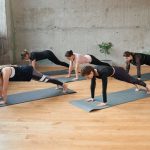In the realm of fitness and endurance sports, the idea of altitude training has carved out a niche for itself. More and more athletes are turning to altitude training masks, devices that mimic the oxygen-deprived conditions of high altitudes. Whether you’re training to summit Kilimanjaro in December or just looking to boost your overall fitness performance, these masks can be a game-changer. But, how exactly do they work, and how can you make the most out of them? This article will walk you through everything you need to know.
Understanding Altitude Training and Its Benefits
Altitude training involves exercising in, living at, or both, high altitudes, where the air is thinner and oxygen levels are lower. It’s long been a key strategy for athletes looking to improve their performance. But altitude training is not just for professionals; it can also benefit recreational athletes and climbers.
Cela peut vous intéresser : How Can Virtual Reality Training Simulators Improve Goalkeeper Reactions in Ice Hockey?
The science behind altitude training is simple: when the body is exposed to low-oxygen conditions, it responds by producing more red blood cells to transport oxygen around the body. This increases cardiovascular performance and endurance, which is invaluable for those aiming to conquer high mountains like Kilimanjaro.
Now, unless you live in a high-altitude area (or have the resources to travel there), incorporating altitude training into your routine can be tricky. That’s where altitude training masks come in.
A lire également : What Are the Best Strategies for Youth Development in Professional Snooker?
Deciphering Altitude Training Masks
Altitude training masks, also known as hypoxic masks, are devices designed to simulate the conditions of high altitude. The masks work by restricting the airflow to your lungs, which can mimic the decreased oxygen levels found at high altitudes.
These masks have adjustable settings that allow you to change the resistance, simulating different elevations. For instance, you can set the mask to simulate an altitude of 3,000 meters above sea level, or even higher.
While altitude training masks can’t fully replicate the physiological changes that occur at high altitudes, they can stimulate the respiratory muscles, potentially improving respiratory fitness and overall performance.
Effective Use of Altitude Training Masks
Altitude training masks are not a plug-and-play solution. Using these masks requires careful planning and a smart approach. As beneficial as these masks can be, they can also cause complications if used improperly.
Firstly, it’s crucial to get your mask fitted correctly. A poorly fitted mask may not provide the resistance you need, or it could be too restricting, which can be dangerous.
You should start using your mask during low-intensity exercises and gradually increase the intensity as your body adapts. This is known as acclimatization. Just as you would acclimatize while climbing a mountain, you need to give your body time to adjust to the changed oxygen levels.
The Role of Altitude Training Masks in Mountain Climbing
Altitude training masks are particularly useful for pre-acclimatization in mountain climbing. Pre-acclimatization can help minimize the risk of altitude sickness, which includes symptoms like dizziness, nausea, and severe headaches.
To simulate the conditions of your future climb, try to learn what the altitude of your target mountain is, then adjust your mask settings accordingly. For instance, if you plan on climbing Kilimanjaro in September, which stands at about 5,895 meters, you might start by setting your mask to simulate 3,000 meters.
Over time, as your body begins to adapt, you can gradually increase the altitude setting. This will allow your body to become more efficient at utilizing the available oxygen, thus improving your climbing performance.
By using altitude training masks for pre-acclimatization, you can ensure that when the time comes to tackle the mountain, your body will be fully prepared. But remember, while these masks can help you acclimatize to high altitudes, they aren’t a substitute for proper training and fitness.
Altitude Training Masks: A Powerful Tool for Mountain Climbing
In conclusion, altitude training masks can be a powerful training tool, especially for mountain climbers. These masks can help your body adapt to the lower oxygen levels you’ll experience at high altitudes, potentially improving your fitness and climbing performance. However, they should be used responsibly and as part of a broader training and acclimatization plan.
Remember, every person’s body responds differently to altitude training, and what works for one person may not work for another. Always listen to your body, and consult with a fitness professional if you’re unsure about anything. Happy climbing!
Altitude Training Masks and Physical Preparations for Mountain Climbing
Incorporating altitude training masks into your physical preparations can drastically improve your climbing performance and reduce the risk of altitude sickness. To achieve this, you need more than just the mask. It requires aerobic capacity building exercises and a tailor-made fitness plan.
By simulating high altitude conditions, the mask forces your body to work harder, increasing your heart rate and, subsequently, your aerobic capacity. This is beneficial for all climbers, whether you are planning an expedition to Mount Kilimanjaro in June or April or just preparing for a high-altitude hike in your local area.
To ensure the mask’s effectiveness, pair it with a variety of high-intensity interval training (HIIT) workouts. These exercises are designed to push your aerobic capacity to its limit, helping you improve your cardiovascular fitness.
Furthermore, when climbing mountains like Kilimanjaro, it’s not only about reaching the summit but also about the ability to handle the steep descents. Incorporating downhill running into your training can help strengthen your leg muscles and improve your balance, which is crucial when descending from high altitudes.
Keep in mind that while altitude training masks can stimulate high altitude conditions, they don’t completely replicate the physiological stress that your body would experience at high altitudes. Therefore, it’s crucial to combine mask training with other pre-acclimatization strategies such as hypoxic chamber training or spending time at high altitudes if possible.
Safety Precautions When Using Altitude Training Masks
Safety should always be your top priority when using altitude training masks. The masks restrict your oxygen supply, which can have serious consequences if not used properly.
To begin with, always ensure that the mask fits properly and is comfortable to wear. If the mask is too tight or the resistance is set too high, it could lead to shortness of breath or even fainting.
If you feel any discomfort while using the mask, such as dizziness, nausea, or extreme fatigue, remove it immediately. These could be signs of altitude sickness, a potentially serious condition that can occur if your body fails to acclimatize to the simulated altitude.
Furthermore, it’s crucial to note that altitude training masks aren’t suitable for everyone. People with respiratory conditions, such as asthma, or heart conditions should avoid using these masks. If you’re unsure whether altitude mask training is safe for you, consult a healthcare professional before starting the training.
Conclusion
Altitude training masks can be an effective tool for pre-acclimatization in mountain climbing, potentially giving you an edge when it comes to tackling high-altitude peaks like Kilimanjaro. The masks can help your body adjust to decreased oxygen levels, enhancing your aerobic capacity and overall climbing performance.
However, these masks do not substitute for physical preparations and fitness. They should be used as a part of a comprehensive training plan that also includes a variety of aerobic exercises. Furthermore, while the masks can help you acclimatize to high altitudes, they aren’t a guarantee against altitude sickness. Therefore, always prioritize safety and listen to your body during the training.
Remember, mountain climbing is not just about reaching the summit, but also about the journey and the experience. So, prepare well, stay safe, and enjoy your climb. Whether you’re planning to conquer Mount Kilimanjaro in February or December, or a local peak in August or July, altitude training masks can help you reach your climbing goals.






